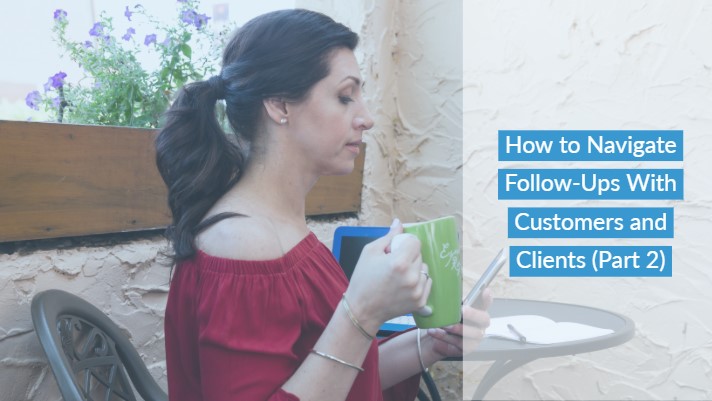Blog
Part 2: How to Navigate Follow-ups with Customers and Clients

Last week I shared the strategy my team and I use for following up with customers and clients.
For situations where dialogue or a relationship has already been established, my advice was to set a plan early.
Simply put, whenever you're talking to an existing or potential customer or client, determine what the next steps are and schedule the next conversation.
This helps eliminate the internal debate that plays in your head of Should I follow up today? A week from now? Two weeks?
Because you don't want to come across as annoying. But you don’t want to miss out on an opportunity either because you're no longer top of mind for that person.
After years of crafting follow-ups, I've developed a few other tips. Try these, and tell me what differences you see!
1. Never say the word “just”
To me, "just” is one of the most irritating words in an email or voicemail. When you use the word “just," you're taking value away from your request. You're minimizing the importance of your communication in a subtle kind of way.
I just want to follow up.
Could you just...
Don't use "just"!
2. Ask a question
A great way to get a response is to ask a question. Asking a question calls your recipient to action and compels him or her to respond.
For example: What time next week are you available to discuss my speaking proposal?
3. Be polite but direct
The fewer words you use, the more likely the person is to respond, and the more likely he or she is to see your question (see tip #2).
So, get right to the point, and talk in terms of next steps.
For example: I am following up on my speaking proposal. Have you had a chance to review it? Once the proposal is confirmed, I can send over a contract.
4. In an email, the subject line is key
The emails that get my attention have subject lines that start with "Follow-up needed” or “Next steps re project x."
These catch my attention because they communicate a sense of urgency. I particularly like the second one because it's focused on moving things forward.
Remember, the subject line is your first chance to get your email read.
5. Don't assume
Don't assume because you sent an email or left a voicemail that person received it and is going to respond.
People are busy, and there's a chance your contact didn't even seen your email or it quickly got buried (which is also why I suggest following up within 7 days.)
If you want to hear back from someone, you have to make it happen. Ask a question, be direct, talk in terms of next steps, pre-schedule the next conversation, and focus on moving things forward.
Do you have any other tips for following up? What are they? I'd love to hear from you!
To read this article as originally written, visit MaryShores.com